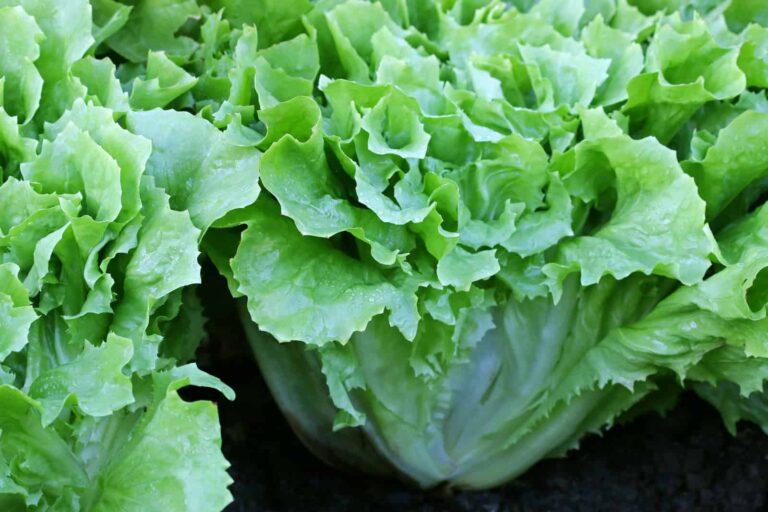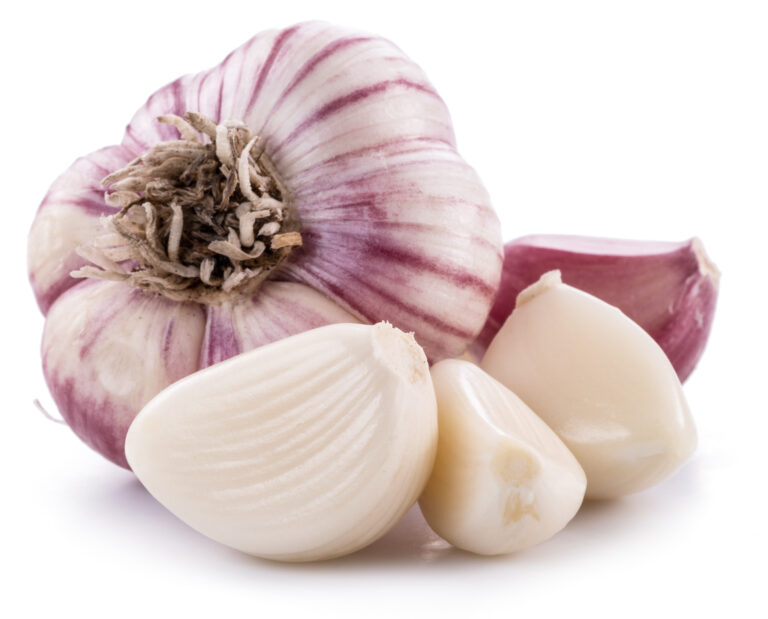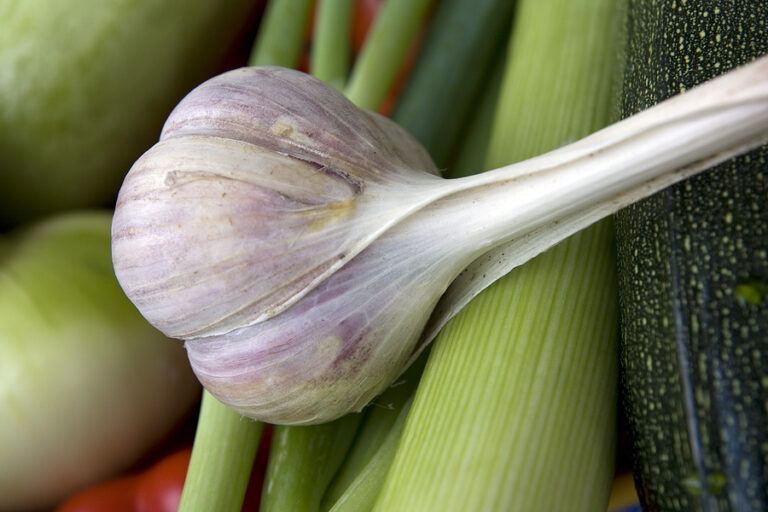How to Harvest and Store Garlic
Harvest garlic in the summer when tops have begun to yellow and partially dry. Garlic will be ready for harvest 90 to 100 days after spring planting and about 8 months after autumn planting.
Related articles:
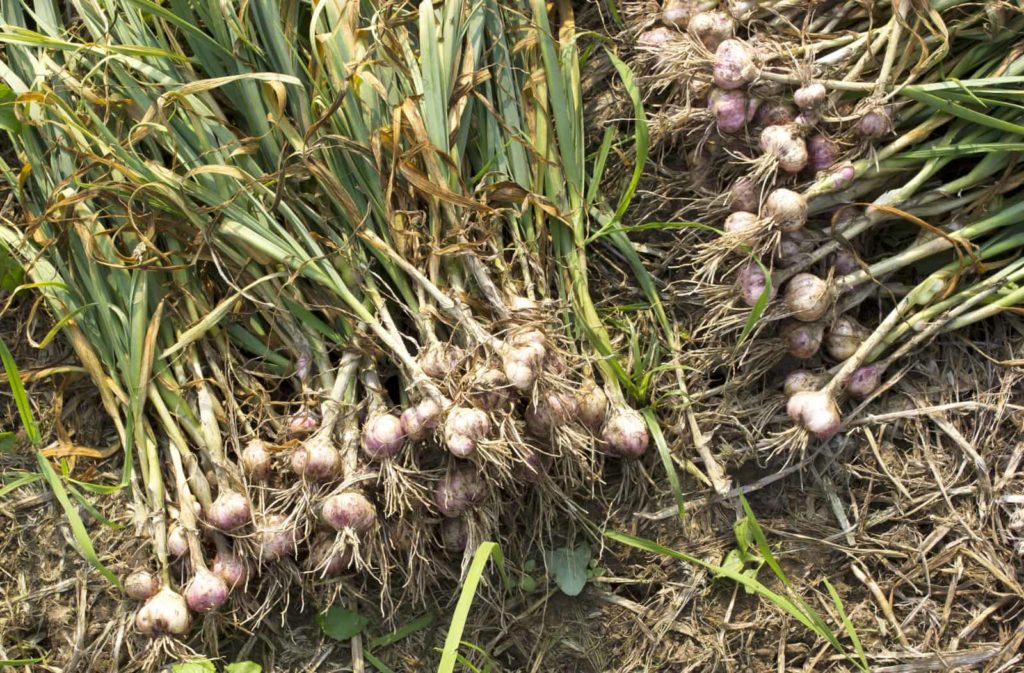
When to harvest garlic
- Harvest garlic bulbs when two-thirds of the plant’s leaves turn yellow and start to fall over 90 to 100 days after spring planting and about 8 months after fall planting.
- The cloves of a mature garlic bulb should fill out the skin of the bulb making it plump; to know for sure your crop is ready, pull up a few bulbs and check. The outer skin of a mature bulb—also called a “head”–should be firm; the papery skins between individual cloves should be intact.
- Don’t harvest bulbs too soon if you plan to store them; small, undeveloped heads do not store well. Conversely, don’t leave bulbs in the ground too long or the cloves will begin to separate and burst from their skins; over-mature garlic heads will be vulnerable to decay and won’t be storable.
- When garlic plant leaves begin to decline and bulb harvest is near stop watering so that the bulbs can begin the drying and curing process.
- Not all garlic varieties mature at the same time. Commonly main harvest garlic in the Northern Hemisphere is ready for harvest in late July.
- Garlic can be harvested before bulbs form. In early spring when the plant is about a foot tall, you can cut garlic greens—or pull the whole plant—and use the greens like scallions. In early summer, you can cut the flower buds—called scapes; scapes can be used just like garlic bulbs. If you don’t remove the scapes in early summer, the bulbs will not swell up for the main harvest in mid-to late-summer. (Scapes can be refrigerated in plastic bags for 3 months.)

How to harvest garlic
- Lift garlic bulbs and greens with a garden fork or spade. Loosen the soil before you lift the bulbs. Do not yank or tug the bulbs.
- Be careful not to bruise the bulbs; bruised bulbs easily rot. A sliced or nicked bulb can still be used, but it can’t be stored.
- Clean soil from the bulbs immediately after harvest and before curing.
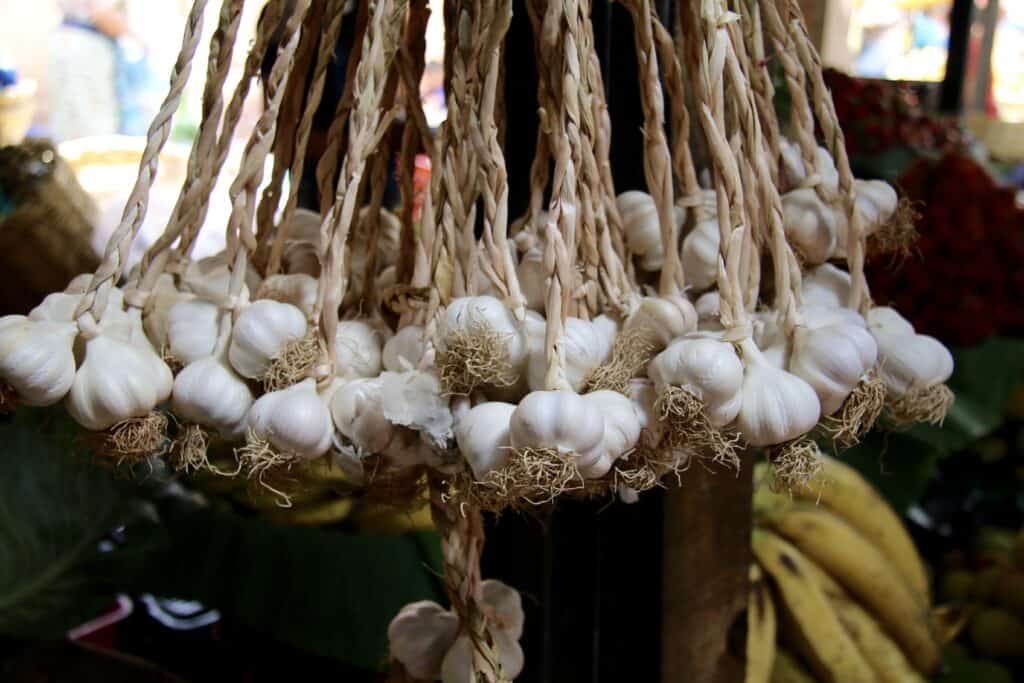
How to cure garlic
- Cure bulbs (to be stored for several months) for two weeks in a shady place with plenty of air circulation.
- Hang the whole plant from a string or place the bulbs on a mesh rack in a well-ventilated place out of direct sunlight.
- The bulbs will be cured and ready to store when the skins or wrappers are dry and papery, the roots are dry, and the cloves can be cracked apart easily. Flavor increases as bulbs dry.
- Once the bulbs have cured, trim the stems to 1½ to 2 inches (4-5 cm) long and remove the roots. You can further clean the bulbs by removing the outer skins, but be careful not to expose the cloves.
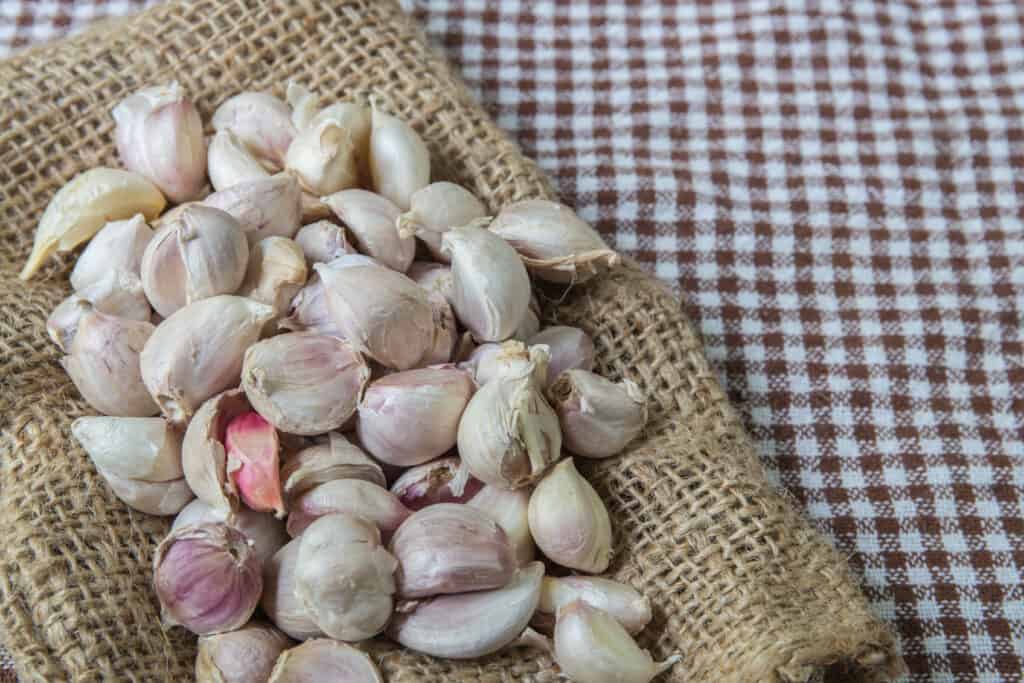
How to store garlic
- If you plan to use the bulbs within a month or so, store garlic at room temperature 60° to 70°F (15-21°C) at low humidity. Store bulbs in a mesh bag or dish in a cupboard. Don’t hang garlic in the kitchen, where it will be exposed to bright light. At room temperature, garlic will keep for 1 to 2 months.
- If you want to store the bulbs for several months, keep them in a cool (32°-40°F/0°-4°C), dry, dark place.
- Hardneck garlic will keep in the refrigerator for 3 to 6 months; softneck garlic will keep in the refrigerator for 6 to 9 months.
- Discard garlic that develops mold during storage.
- If you want to grow garlic again next season, save some of your largest, best-formed bulbs to plant again in the fall.
Types of garlic
There are three types of garlic: Softneck, Hardneck (Stiffneck), and Great-headed (Elephant). Most varieties are ready for harvest about 90 days after planting.
- Softneck varieties have necks that stay soft after harvest. Softneck varieties such as ‘Persian Star’ and ‘Mother of Pearl’ are best grown in warm-winter regions; they are less winter-hardy than other types. These varieties are commonly braided for storage. Softneck varieties are intensely flavored.
- Hardneck varieties grow a single ring of cloves around a stem; they are not layered like softneck varieties. Hardnecks are extremely cold hardy but do not store as well or as long as other varieties. Hardneck varieties are mild flavored.
- Great-headed is closely related to leeks. Their flavor is more like an onion than traditional garlic. Bulbs and cloves are large, with about 4 cloves to a bulb. Great-necks are not hardy and do not store as well as softneck and hardneck varieties.
Garlic Growing Hub
Start here: The Ultimate Garlic Growing Guide: From Seed to Harvest
🌱 Garlic Planting & Timing Clusters
- Garlic Plant Starting Tips: How to Get Going
- When to Plant Garlic: Fall vs. Spring Compared
- Garlic Planting Calendar by Zone (Month-by-Month Guide)
- Ideal Soil Temperature for Planting Garlic and Why It Matters
- Climate Guide: Growing Garlic in Warm vs. Cold Regions
🧄 Garlic Types & Varieties Clusters
- Softneck vs. Hardneck Garlic: Key Differences for Gardeners
- Best Softneck Garlic Varieties for Home Gardens
- Best Hardneck Garlic Varieties for Flavor and Storage
- Rocambole Garlic: What It Is and How to Grow It
- Elephant Garlic: Tips for Planting and Harvesting Giant Bulbs
🌿 Growing & Care Clusters
- Proper Garlic Spacing for Bigger Bulbs
- How to Water Garlic the Right Way
- Fertilizing Garlic: Feeding Tips Bigger, Healthier Bulbs
- Essential Garlic Care: From Planting to Harvest
- Best Companion Plants for Garlic (And What to Avoid)
- How to Grow Garlic in Containers: Step-by-Step Guide
🐛 Pests & Disease Clusters
🌾 Harvest & Storage Clusters
- How to Tell When Garlic Is Ready to Harvest
- How to Harvest and Store Garlic
- How to Cure Garlic for Long-Term Storage
- Best Ways to Store and Preserve Garlic at Home
🍳 Kitchen & Use Clusters
- Garlic Cooking and Severing Ideas for Your Harvest Table
- Fresh Garlic vs. Stored Garlic: Flavor and Cooking Differences
- Garlic Scapes: What They Are and How to Use Them
- Leeks vs. Green Onions vs. Garlic: What’s the Difference
Garlic articles at Harvest to Table:
How to Harvest and Store Garlic
Five Ways to Cook and Serve Garlic
Oyster Mushroom Sauteed in Garlic
Garden Planning Books at Amazon:
- Vegetable Garden Almanac & Planner
- Kitchen Garden Grower’s Guide Vegetable Encyclopedia
- Vegetable Garden Grower’s Guide
- Tomato Grower’s Answer Book
More harvest tips:
Learn when and how to harvest your favorite vegetables for the best flavor and texture. Get storage tips for each crop. Click on the vegetable you are growing below.
- Artichoke
- Arugula
- Asparagus
- Beans
- Beets
- Broccoli
- Brussels Sprouts
- Cabbage
- Cantaloupe — Melons
- Carrots
- Cauliflower
- Celery
- Chard
- Collards
- Corn, Sweet
- Cucumbers
- Eggplant
- Endive and Escarole
- Garlic
- Jerusalem Artichoke
- Kale
- Kohlrabi
- Leeks
- Lettuce
- Melons
- Okra
- Onions
- Parsnips
- Peas
- Peppers
- Potatoes
- Pumpkins
- Radicchio
- Rhubarb
- Rutabaga
- Spinach
- Squash, Summer
- Squash, Winter
- Sunchokes
- Sweet Potato
- Swiss Chard
- Tomatillo
- Tomatoes
- Turnips
- Watermelon


